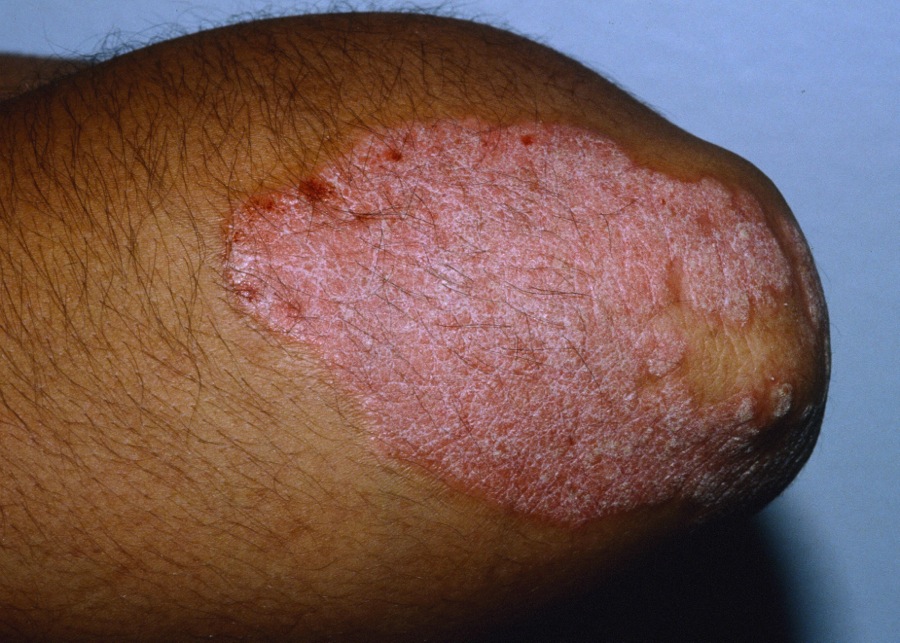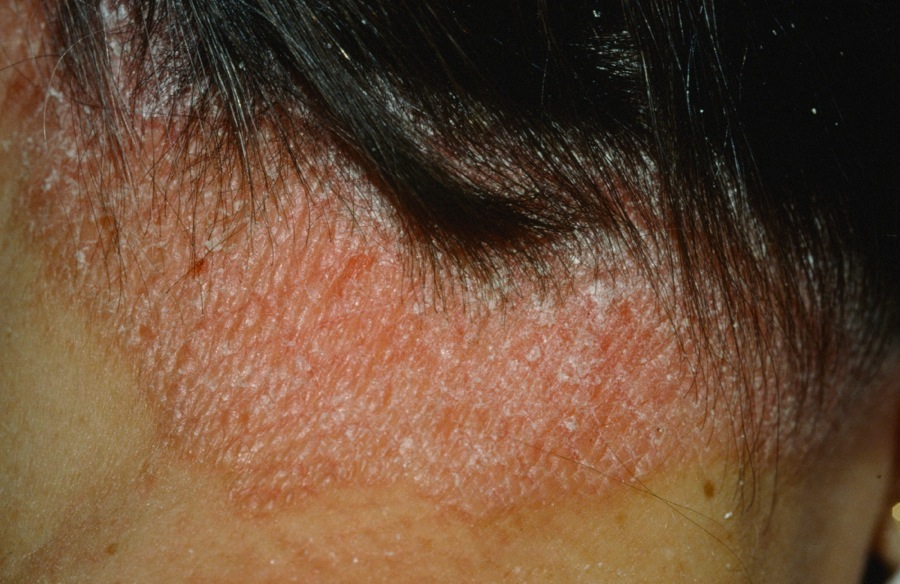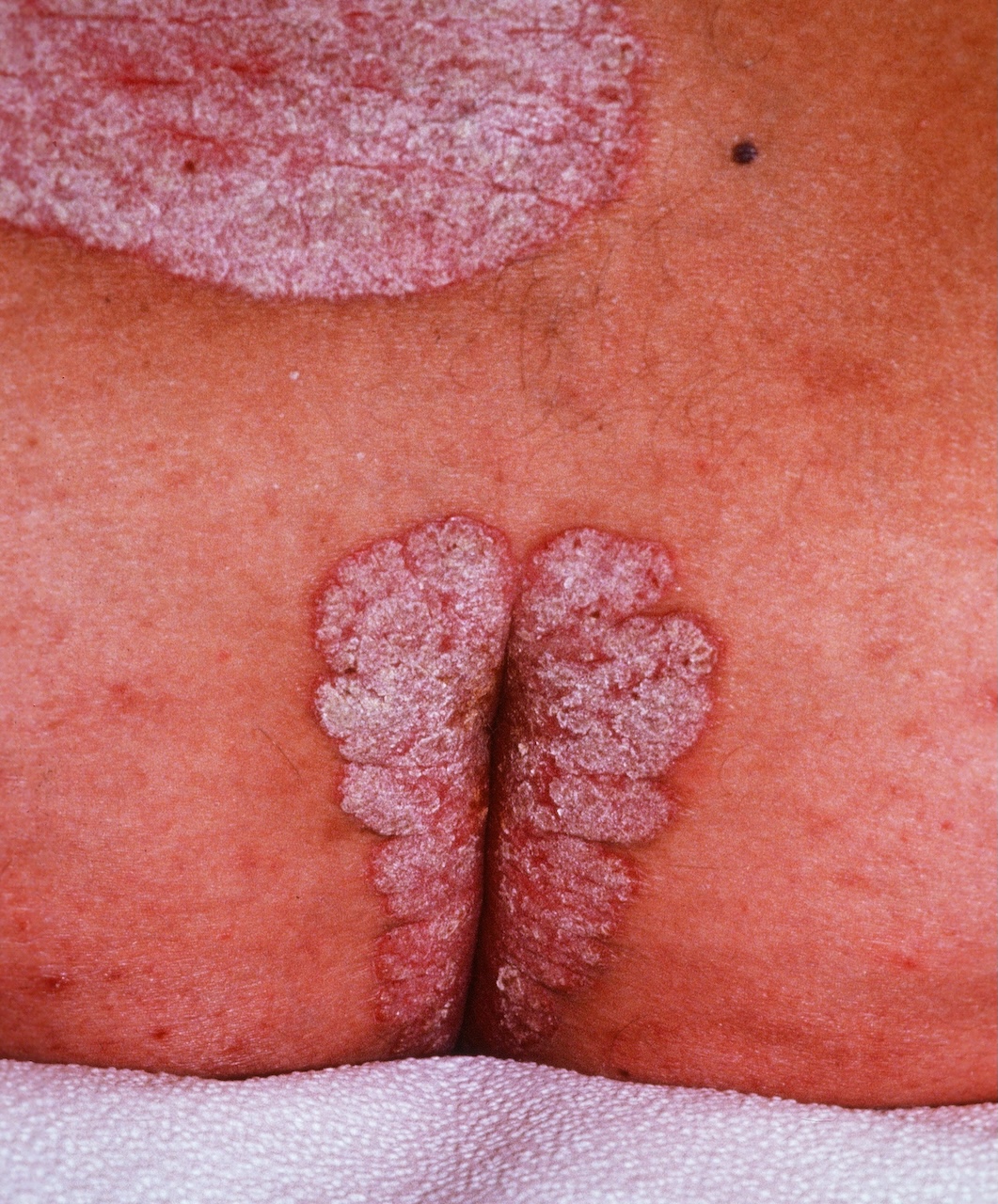
Red, scaly, papulosquamous plaques may develop almost anywhere, but are most common on the elbows and knees, scalp, and shins.

Red, scaly, papulosquamous plaques may develop almost anywhere, but are most common on the elbows and knees, scalp, and shins.
Psoriasis is a chronic skin condition characterized by raised, red, scaly patches of skin called plaques. It is an autoimmune disorder, meaning that the body's immune system mistakenly attacks healthy skin cells.
Red, scaly, papulosquamous plaques may develop almost anywhere, but are most common on the elbows and knees, scalp, and shins. Men commonly develop lesions on the penis and this may be their presenting problem. Lesions of the body folds often appear as red plaques without scale. Itching may occur, but is not nearly as intense as with eczema. Seborrheic dermatitis may coexist. In fact, there is a spectrum in the scalp from dandruff to seborrheic dermatitis to psoriasis. Sometimes the term sebopsoriasis is used.
About 30% of patients go on to develop psoriatic arthritis (PsA). On average, onset of PsA is 6 years after onset psoriasis. Initially and periodically inquire about joint symptoms. Consider using an IL-17 or IL-23 inhibitor as those are associated with a lower risk of developing PsA than TNF agents.

Psorisis of the Scalp.. Psoriasis of the scalp is extremely common. There is a spectrum in the scalp from dandruff to seborrheic dermatitis to psoriasis.
 Psoriasis of the Nails. 5-10% of patients with psoriasis have nail involvement. Pits, onycholysis (both shown here), thickening, and "oil spots" are typical. All or only some nails may be affected. The most commonly involved is the dominant hand thumbnail.
Psoriasis of the Nails. 5-10% of patients with psoriasis have nail involvement. Pits, onycholysis (both shown here), thickening, and "oil spots" are typical. All or only some nails may be affected. The most commonly involved is the dominant hand thumbnail.

Inverse Psoriasis. Psoriasis may affect the body folds (and is called inverse psoriasis). Psoriasis of the body folds often appear as red plaques without scale.

Psoriasis of the Gluteal Cleft along with nail changes.

Psoriasis of the Penis. Men commonly develop lesions on the penis and this may be their presenting problem.
Who is Dr. White? | Privacy Policy | FAQs | Use of Images | Contact Dr. White